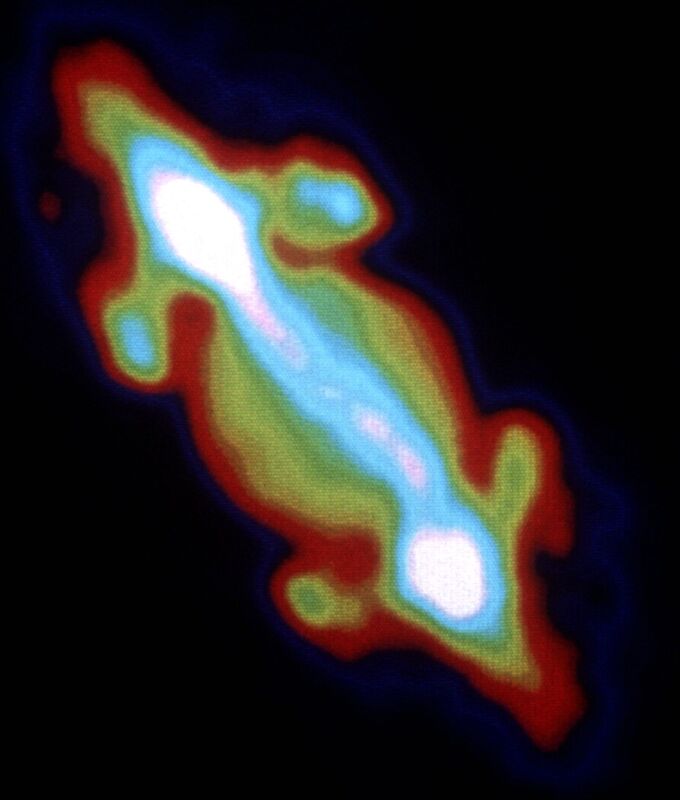Jupiter
Description
The planet Jupiter has a strong magnetic field which traps and holds very fast moving electrons. These electrons radiate radio waves producing the large extended features beyond the planet's disk seen in the VLA picture of Jupiter. The electrons and magnetic field outside of Jupiter's atmosphere form a region very similar to the Earth's Van Allen radiation belt. Optical emission from Jupiter arises only from the planet disk itself, because the relativistic particles are not energetic enough to emit in the optical spectrum. The gas in the atmosphere of the planet itself also produces radio emission.
Observing run - 1981 May at the VLA, B-configuration using about 27 antennas. Integration time - 15 minutes.
Creator
Legacy Astronomical Images
Rights
NRAO/AUI/NSF does not hold full copyright for this image. Contact the archivist for details.
Type
Legacy Astronomical Image
Object Name
Jupiter
Investigators
I. de Pater
Telescope
Very Large Array (VLA)
Observation Date
1981-05-22
Type of Observation
continuum
Band
L
Wavelength
20 cm
Frequency
1.4 GHz
Center of Image
RA 25:0:0.000, Dec: 0:0:0.000 (J2000)
Link to journal article
Notes
Contact the archivist for a high resolution tif of this image.
Series
Solar System Series
Unit
Planets Unit
Citation
Legacy Astronomical Images, “Jupiter,” NRAO/AUI Archives, accessed April 20, 2025, https://www.nrao.edu/archives/items/show/33613.

